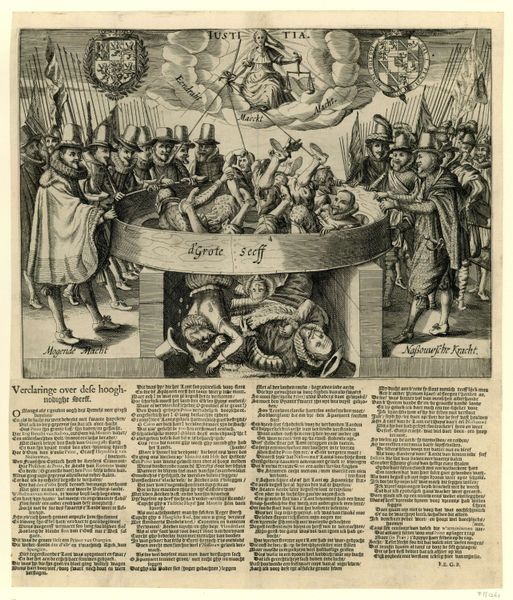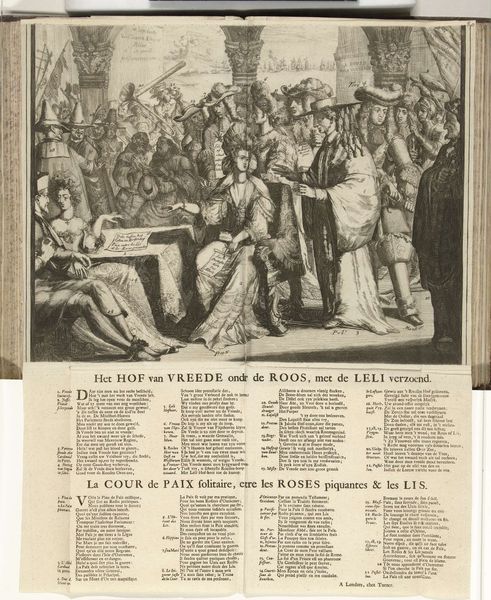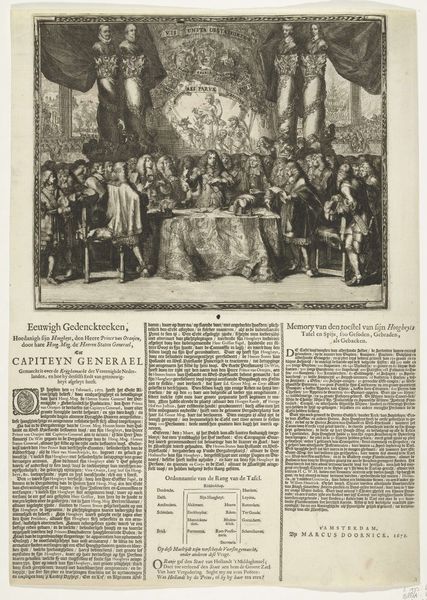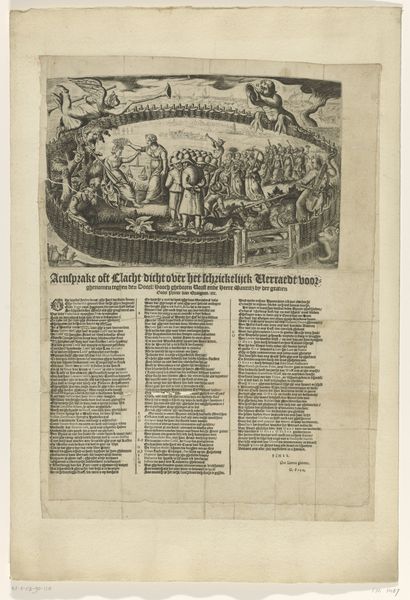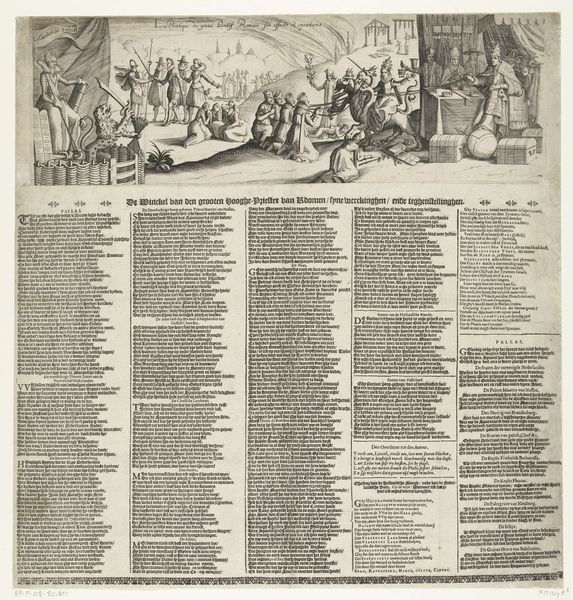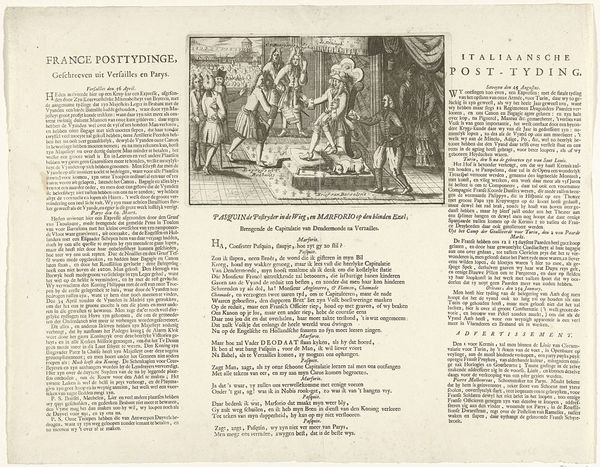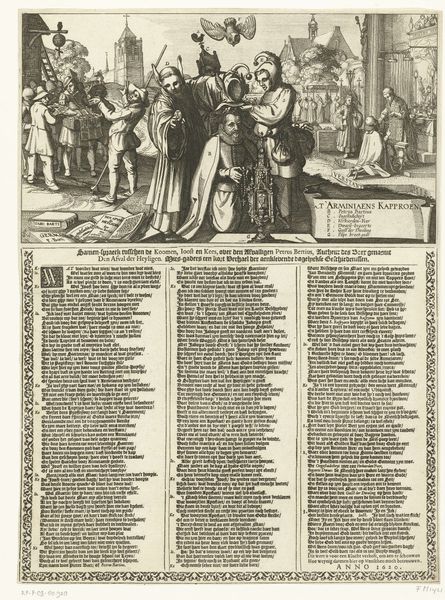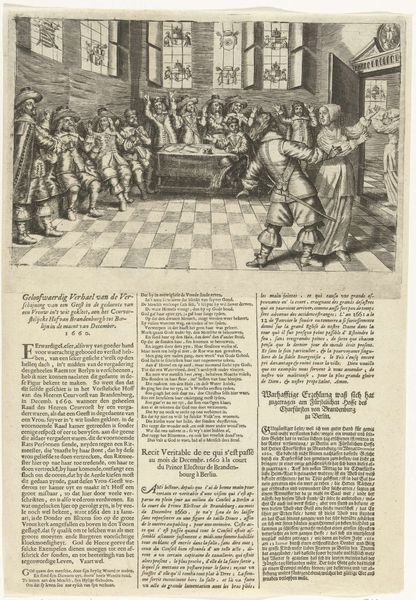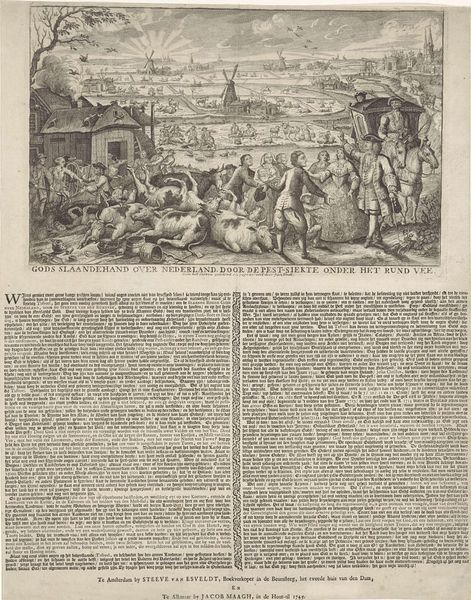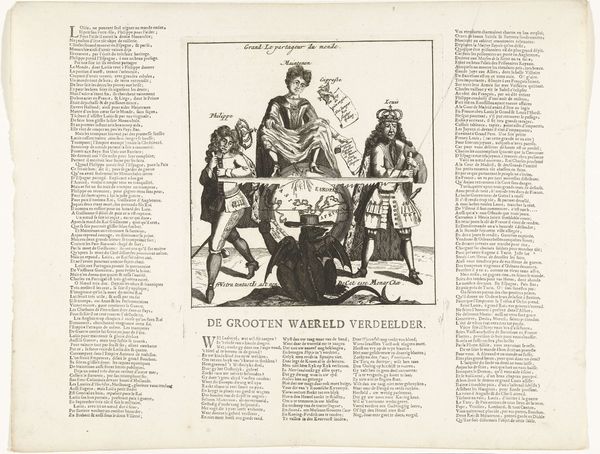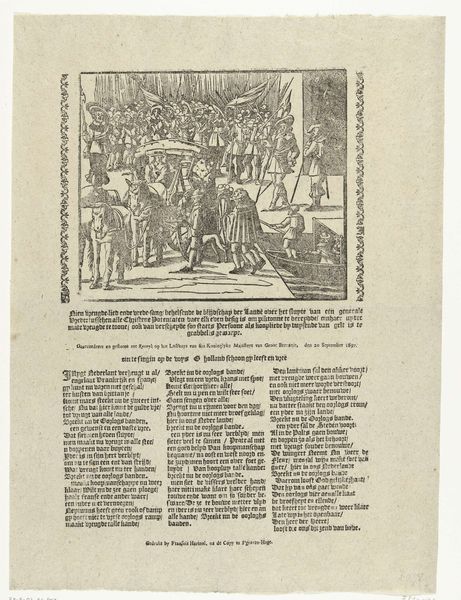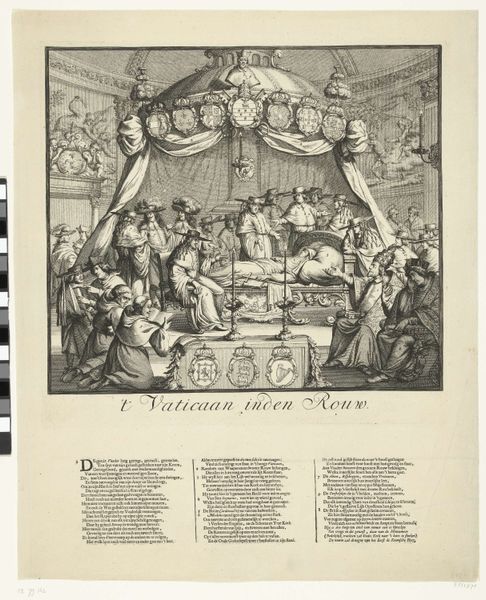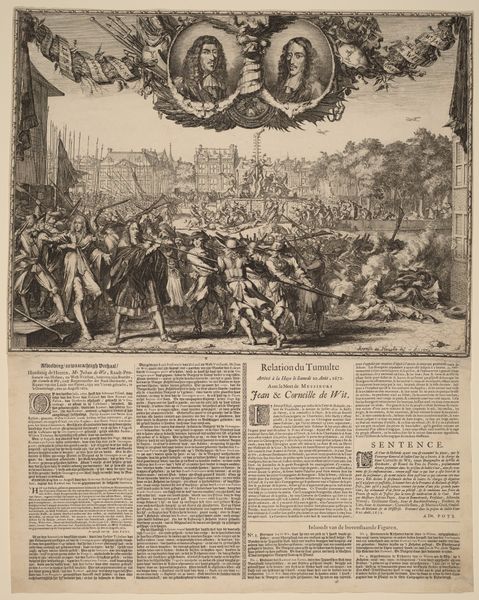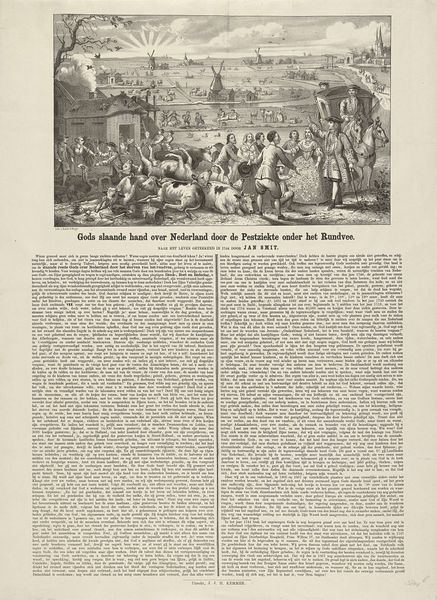
print, engraving
#
aged paper
#
allegory
#
narrative-art
#
baroque
# print
#
old engraving style
#
traditional media
#
history-painting
#
engraving
Dimensions: height 517 mm, width 377 mm
Copyright: Rijks Museum: Open Domain
Curator: This engraving, "Rechtveerdighe Sifte," created in 1618, is currently held at the Rijksmuseum. What’s your initial impression of it? Editor: Well, the stark contrast of light and shadow certainly creates a rather somber, even unsettling mood. The composition, with its swirling figures and dense text, is quite complex, wouldn't you agree? Curator: Absolutely. Structurally, we see Justice enthroned at the apex, presiding over a chaotic scene. Notice the balance achieved through the heraldic shields, creating a visually arresting symmetrical tableau. Editor: From a materialist viewpoint, the precision of the engraving is remarkable, considering the limitations of the tools and techniques of the period. This suggests a high level of craftsmanship, possibly linked to a specific workshop tradition. I would love to know where and how it was made and who precisely was involved in its creation, what sort of labor this level of complexity involved. Curator: Interesting, yes. However, considering the allegorical context of the image, the swirling figures are far from chaotic. They are symbols representing various societal ills being purged by Justice. Notice how each character is meticulously rendered, each with distinctive clothing that helps contextualize his station and alleged sin. Editor: While I recognize the narrative intent, my focus remains on the production—the very labor embedded within these fine lines. It begs the question, for what intended market was this crafted? Its small size suggests a widespread distribution was never the intention. Curator: Perhaps a more focused distribution for the elite then? Ultimately, the enduring impact resides in the symbolic clarity, a visualization of abstract ideals such as Justice in action. It transcends its immediate socio-political circumstances. Editor: Still, tracing its materiality and mode of production grants insights that textual analysis simply cannot yield. To handle such material—the ink, the copperplate, the paper itself—reveals much. What labor undergirds it? Curator: The artwork functions then on two levels. First, as an expression of the socio-cultural and legal mores; but also, its very production underscores labor, value, and intended use as an object within a network of exchange. I hadn't considered that before. Editor: That convergence provides a powerful, richer, context indeed. Thank you.
Comments
No comments
Be the first to comment and join the conversation on the ultimate creative platform.
